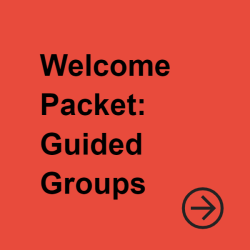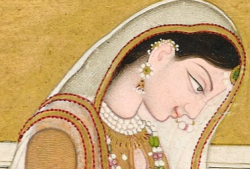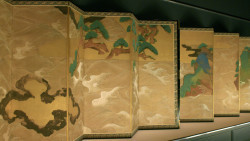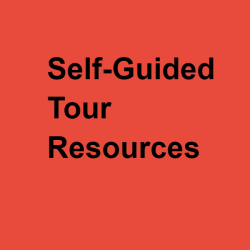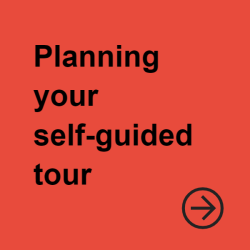National Museum of Asian Art Education
National Museum of Asian Art
Looking for learning resources from the National Museum of Asian Art? Visit our new landing page.
National Museum of Asian Art Education's collections
Welcome Packet: National Museum of Asian Art Guided Field Trips
<p>Please review this collection to prepare for your visit to the National Museum of Asian Art. </p>
 National Museum of Asian Art Education
National Museum of Asian Art Education
18
Introducing Diwali
<p>Many people around the world celebrate Diwali, the Hindu festival of light, which spans five days and marks the beginning of the new year in the Hindu calendar. Learn about Diwali through interactive discussions, videos, and activities.</p>
 National Museum of Asian Art Education
National Museum of Asian Art Education
21
Waves: Japanese language immersion activities and resources
<p>This slow-looking activity is designed for Japanese immersion students, featuring artworks of the Edo period( 1603–1868). The website "Investigating Japan's Edo Avant Garde" highlights works from the National Asian Art Museum to explore the innovative creativity of Edo artists. <a href="https://investigatingedo.asia.si.edu/lesson-plans/">https://investigatingedo.asia....</a> 国立アジア美術館所蔵作品「Investigating Japan's Edo Avant Garde」から、日本語イマ―ジョンのアクティビティを紹介します。俵屋宗達(たわらや そうたつ)は17世紀初期に活躍した江戸時代 (1603–1868) を代表する絵師です。宗達は、革新的な画法を創造することで、自然界や人々を描写し、芸術に命を吹き込みました。<a href="https://investigatingedo.asia.si.edu/lesson-plans/"></a></p>
 National Museum of Asian Art Education
National Museum of Asian Art Education
14
Self-Guided Visit Resources
<p>The National Museum of Asian Art welcomes teachers to guide their students through the museum independently. Please<a href="https://asia.si.edu/whats-on/tours/reserve-a-self-guided-visit/"> register your group </a>at least three weeks prior to your visit. This assists museum staff in preventing overcrowding in the galleries. The information in this learning lab is designed to assist you in planning your self-guided visit. If you would like assistance in preparing your students, please email asiatours@si.edu.</p>
<p><br></p>
 National Museum of Asian Art Education
National Museum of Asian Art Education
57
Virtual Field Trip Resources: Ancient China
<p>Thank you for reserving<em> Ancient China</em> virtual field trip with the National Museum of Asian Art. Please review the materials on this website for logistics information. Complete a pre-visit lesson (review the PowerPoint and complete one object observation practice lesson) to prepare your students for close-looking at the works of art they may see on the virtual field trip. The pre-visit lesson takes about 20 minutes to complete. After the virtual visit, complete a post-visit activity, which takes about 20 minutes to finish. Resources for additional research are also included.</p>
<p>Need to reserve a virtual field trip? Visit the<a href="https://asia.si.edu/education/field-trips/" target="_blank"> Field Trips</a> page for a complete listing of topics. Complete the form to <a href="https://asia.si.edu/education/field-trips/request-form-virtual-field-trip/" target="_blank">reserve your virtual visit.</a></p>
 National Museum of Asian Art Education
National Museum of Asian Art Education
19
On-site Field Trip Resources: Highlights: Art across Cultures
<p>Thank you for reserving a <em>Highlights: Art across Cultures </em>on-site field trip with the National Museum of Asian Art. Please review the materials on this website for logistics information. Complete a pre-visit lesson (review the PowerPoint and complete one object observation practice lesson) to prepare your students for close-looking at the works of art they may see on the field trip. The pre-visit lesson takes about 20 minutes to complete. After the visit, complete a post-visit activity, which takes about 20 minutes. Resources for additional research are also included.</p>
<p>Need to reserve an on-site? Visit the<a href="https://asia.si.edu/education/field-trips/" target="_blank"> Field Trips</a> page for a complete listing of topics. Complete the form to <a href="https://asia.si.edu/education/field-trips/request-form-reserved-tours-for-schools-and-students/" target="_blank">reserve your on-site visit.</a></p>
 National Museum of Asian Art Education
National Museum of Asian Art Education
18
On-site Field Trip Resources: Arts of China
<p>Thank you for reserving an <em>Arts of China</em> on-site field trip with the National Museum of Asian Art. Please review the materials on this website for logistics information. Complete a pre-visit lesson (review the PowerPoint and complete one object observation practice lesson) to prepare your students for close-looking at the works of art they may see on the field trip. The pre-visit lesson takes about 20 minutes to complete. After the visit, complete a post-visit activity, which takes about 20 minutes. Resources for additional research are also included.</p>
<p>Need to reserve an on-site? Visit the<a href="https://asia.si.edu/education/field-trips/" target="_blank"> Field Trips</a> page for a complete listing of topics. Complete the form to <a href="https://asia.si.edu/education/field-trips/request-form-reserved-tours-for-schools-and-students/" target="_blank">reserve your on-site visit.</a></p>
 National Museum of Asian Art Education
National Museum of Asian Art Education
22
On-site Field Trip Resources: Arts of Japan
<p>Thank you for reserving an <em>Arts of Japan</em> on-site field trip with the National Museum of Asian Art. Please review the materials on this website for logistics information. Complete a pre-visit lesson (review the PowerPoint and complete one object observation practice lesson) to prepare your students for close-looking at the works of art they may see on the field trip. The pre-visit lesson takes about 20 minutes to complete. After the visit, complete a post-visit activity, which takes about 20 minutes. Resources for additional research are also included.</p>
<p>Need to reserve an on-site? Visit the<a href="https://asia.si.edu/education/field-trips/" target="_blank"> Field Trips</a> page for a complete listing of topics. Complete the form to <a href="https://asia.si.edu/education/field-trips/request-form-reserved-tours-for-schools-and-students/" target="_blank">reserve your on-site visit.</a></p>
 National Museum of Asian Art Education
National Museum of Asian Art Education
19

